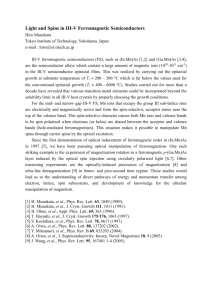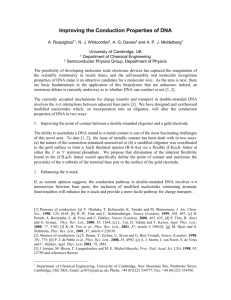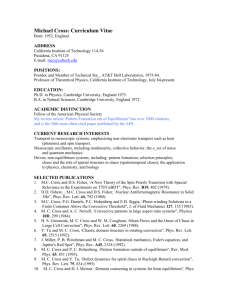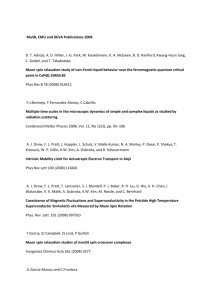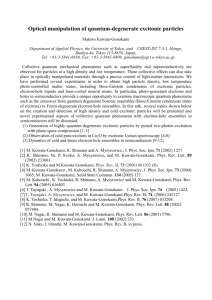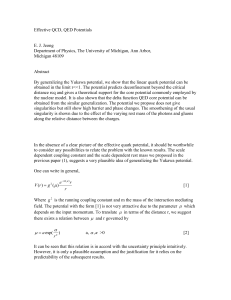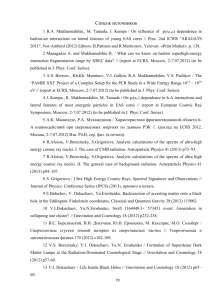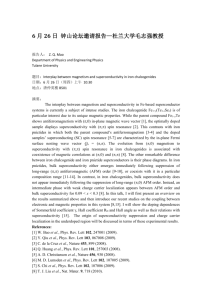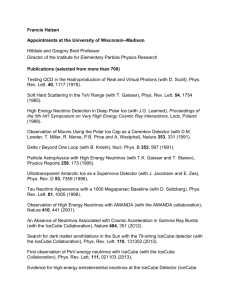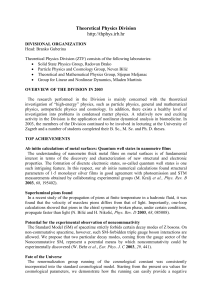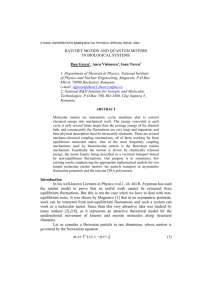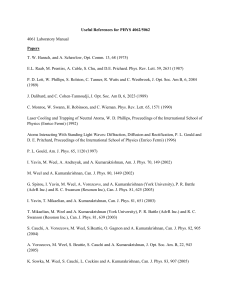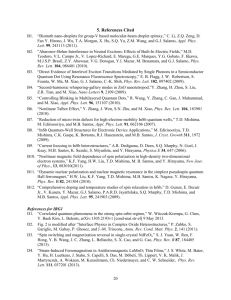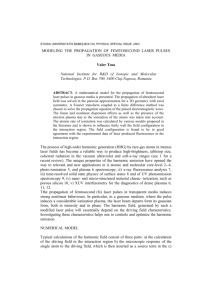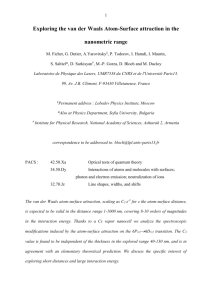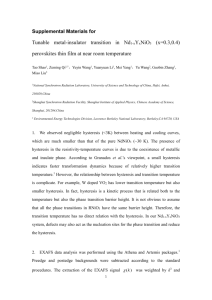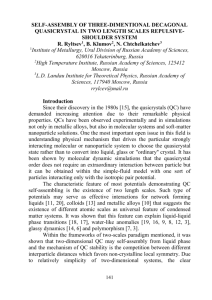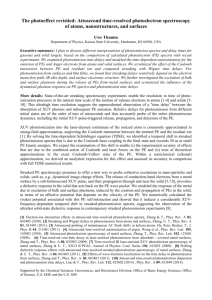Nanoscale structural study of liquid surfaces and overlayers by x
advertisement
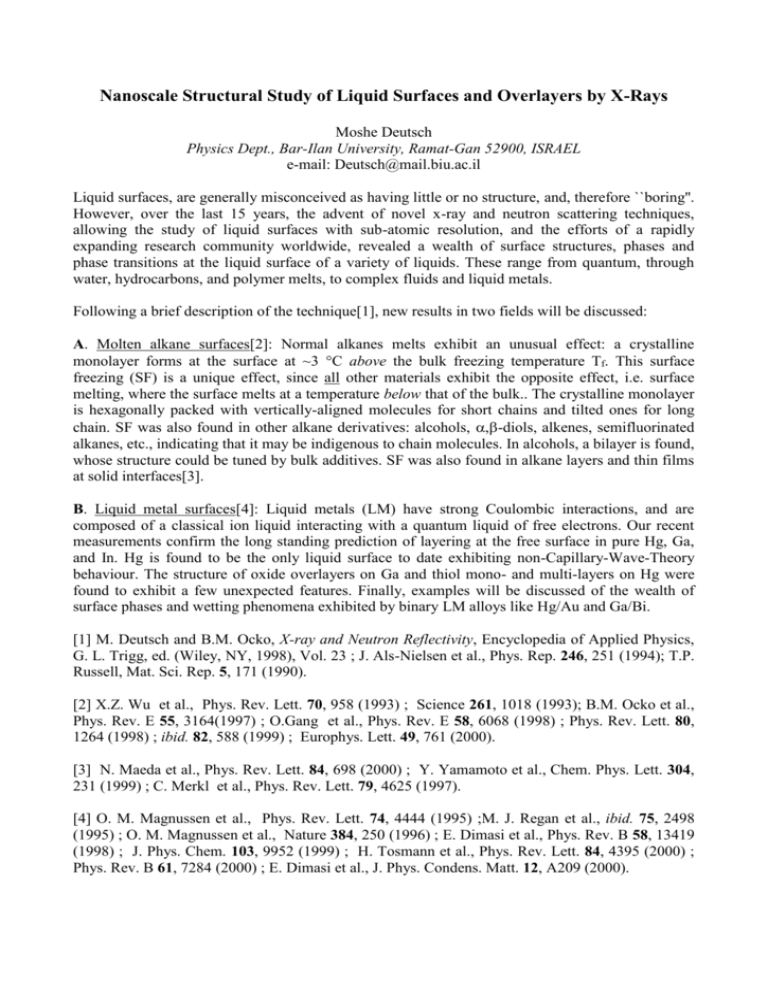
Nanoscale Structural Study of Liquid Surfaces and Overlayers by X-Rays Moshe Deutsch Physics Dept., Bar-Ilan University, Ramat-Gan 52900, ISRAEL e-mail: Deutsch@mail.biu.ac.il Liquid surfaces, are generally misconceived as having little or no structure, and, therefore ``boring''. However, over the last 15 years, the advent of novel x-ray and neutron scattering techniques, allowing the study of liquid surfaces with sub-atomic resolution, and the efforts of a rapidly expanding research community worldwide, revealed a wealth of surface structures, phases and phase transitions at the liquid surface of a variety of liquids. These range from quantum, through water, hydrocarbons, and polymer melts, to complex fluids and liquid metals. Following a brief description of the technique[1], new results in two fields will be discussed: A. Molten alkane surfaces[2]: Normal alkanes melts exhibit an unusual effect: a crystalline monolayer forms at the surface at ~3 C above the bulk freezing temperature Tf. This surface freezing (SF) is a unique effect, since all other materials exhibit the opposite effect, i.e. surface melting, where the surface melts at a temperature below that of the bulk.. The crystalline monolayer is hexagonally packed with vertically-aligned molecules for short chains and tilted ones for long chain. SF was also found in other alkane derivatives: alcohols, ,-diols, alkenes, semifluorinated alkanes, etc., indicating that it may be indigenous to chain molecules. In alcohols, a bilayer is found, whose structure could be tuned by bulk additives. SF was also found in alkane layers and thin films at solid interfaces[3]. B. Liquid metal surfaces[4]: Liquid metals (LM) have strong Coulombic interactions, and are composed of a classical ion liquid interacting with a quantum liquid of free electrons. Our recent measurements confirm the long standing prediction of layering at the free surface in pure Hg, Ga, and In. Hg is found to be the only liquid surface to date exhibiting non-Capillary-Wave-Theory behaviour. The structure of oxide overlayers on Ga and thiol mono- and multi-layers on Hg were found to exhibit a few unexpected features. Finally, examples will be discussed of the wealth of surface phases and wetting phenomena exhibited by binary LM alloys like Hg/Au and Ga/Bi. [1] M. Deutsch and B.M. Ocko, X-ray and Neutron Reflectivity, Encyclopedia of Applied Physics, G. L. Trigg, ed. (Wiley, NY, 1998), Vol. 23 ; J. Als-Nielsen et al., Phys. Rep. 246, 251 (1994); T.P. Russell, Mat. Sci. Rep. 5, 171 (1990). [2] X.Z. Wu et al., Phys. Rev. Lett. 70, 958 (1993) ; Science 261, 1018 (1993); B.M. Ocko et al., Phys. Rev. E 55, 3164(1997) ; O.Gang et al., Phys. Rev. E 58, 6068 (1998) ; Phys. Rev. Lett. 80, 1264 (1998) ; ibid. 82, 588 (1999) ; Europhys. Lett. 49, 761 (2000). [3] N. Maeda et al., Phys. Rev. Lett. 84, 698 (2000) ; Y. Yamamoto et al., Chem. Phys. Lett. 304, 231 (1999) ; C. Merkl et al., Phys. Rev. Lett. 79, 4625 (1997). [4] O. M. Magnussen et al., Phys. Rev. Lett. 74, 4444 (1995) ;M. J. Regan et al., ibid. 75, 2498 (1995) ; O. M. Magnussen et al., Nature 384, 250 (1996) ; E. Dimasi et al., Phys. Rev. B 58, 13419 (1998) ; J. Phys. Chem. 103, 9952 (1999) ; H. Tosmann et al., Phys. Rev. Lett. 84, 4395 (2000) ; Phys. Rev. B 61, 7284 (2000) ; E. Dimasi et al., J. Phys. Condens. Matt. 12, A209 (2000).
